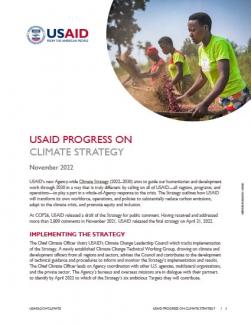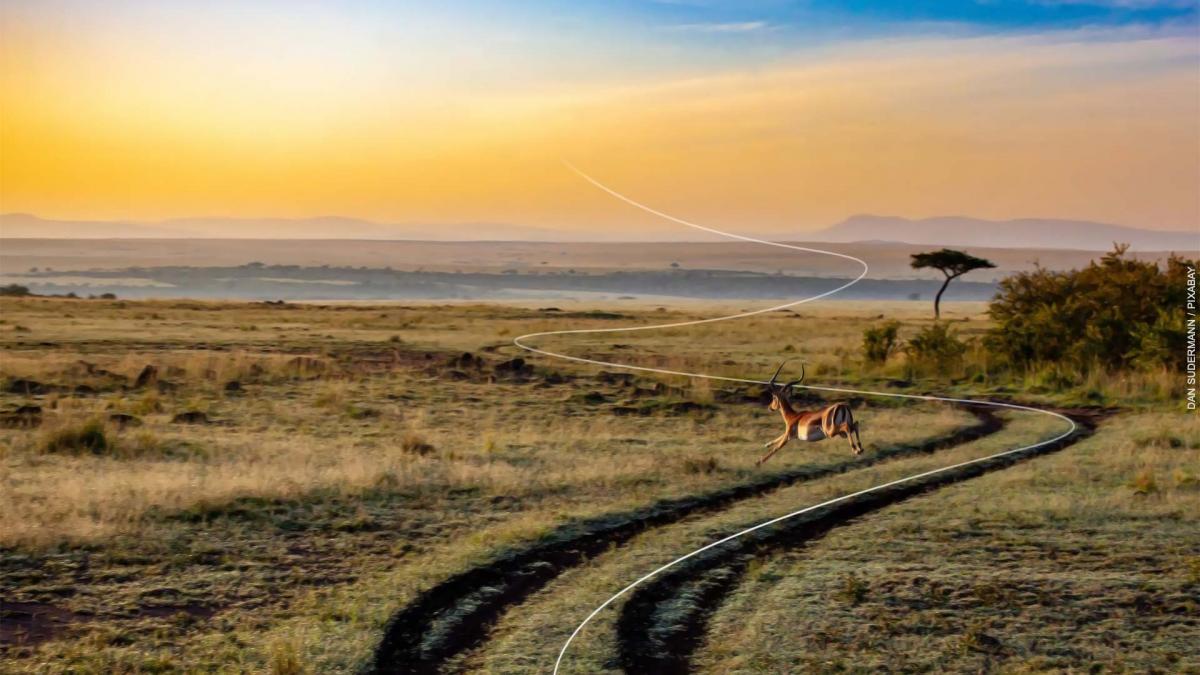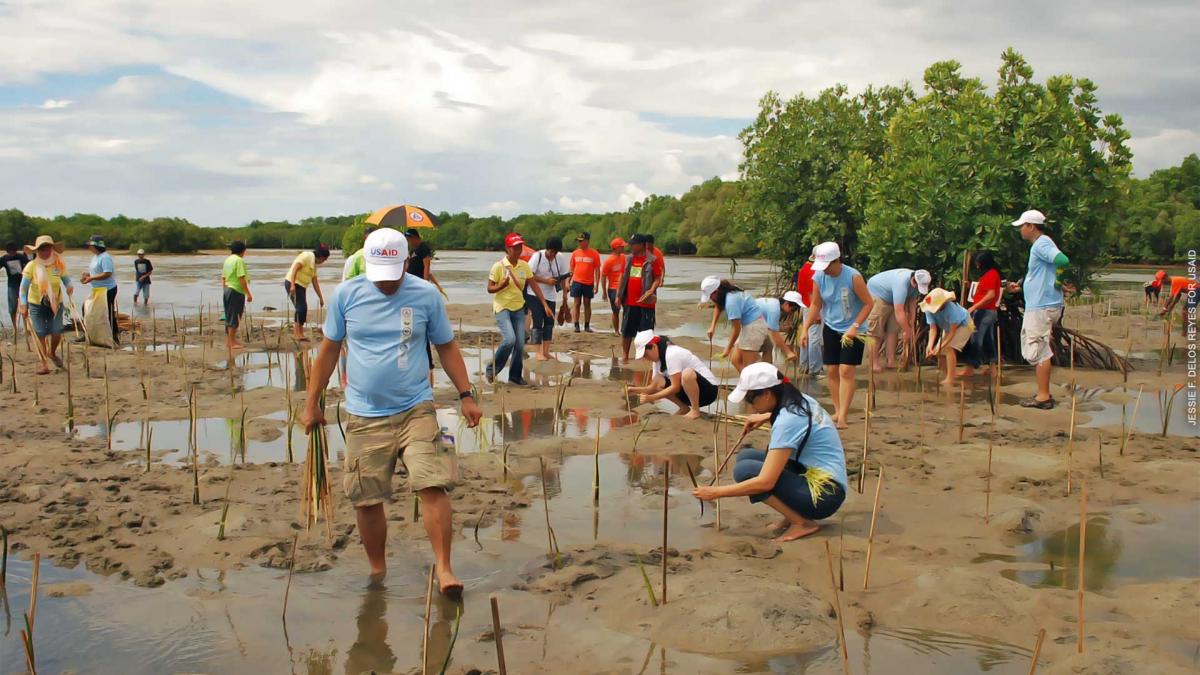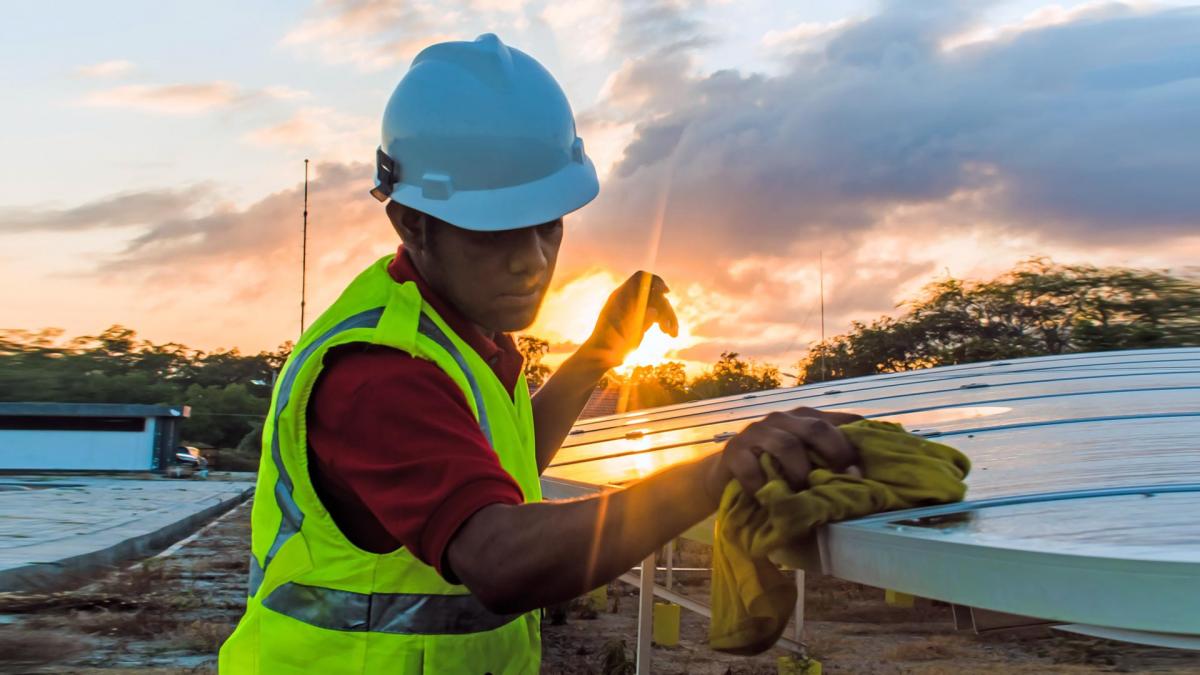In the six months since the launch of USAID’s Climate Strategy (2022–2030), the Agency has formalized its whole-of-Agency approach and is pursuing both targeted, direct actions and broad-based systemic change to dramatically increase its impact.
Explore our Year 1 Update
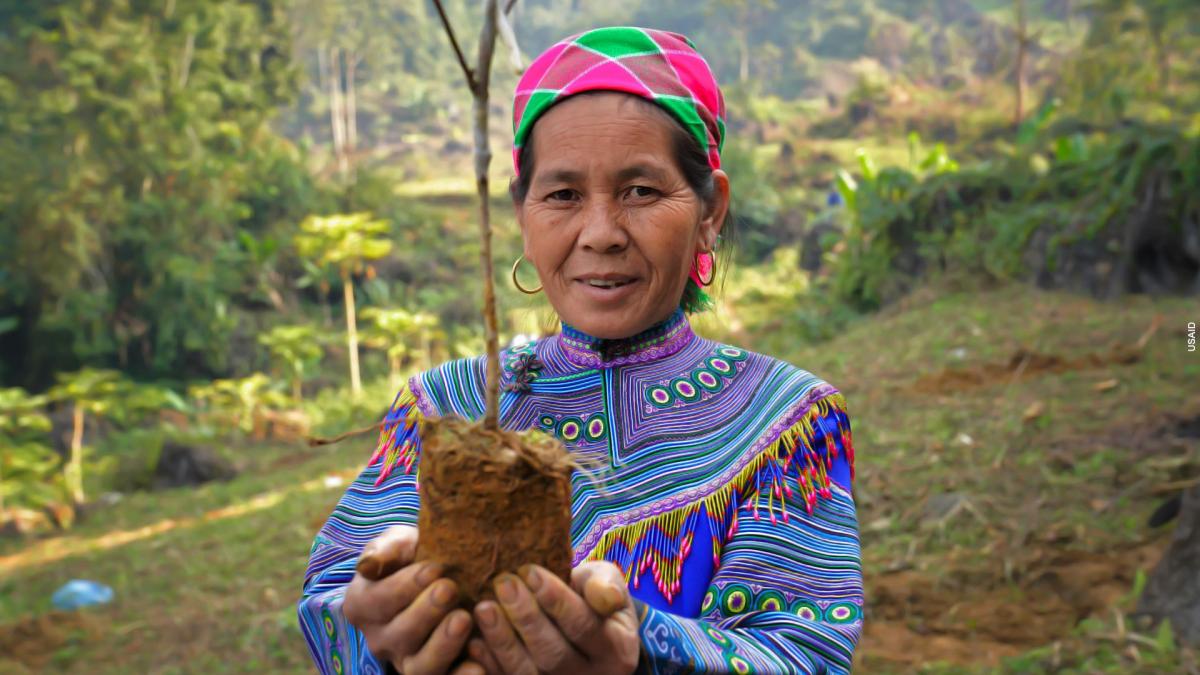
USAID’s new Agency-wide Climate Strategy (2022–2030) aims to guide our humanitarian and development work through 2030 in a way that is truly different: by calling on all of USAID—all regions, programs, and operations—to play a part in a whole-of-Agency response to the crisis.
The Strategy outlines how USAID will transform its own workforce, operations, and policies to substantially reduce carbon emissions, adapt to the climate crisis, and promote equity and inclusion.
At COP26, USAID released a draft of the Strategy for public comment. Having received and addressed more than 2,800 comments in November 2021, USAID released the final strategy on April 21, 2022.
Implementing The Strategy
The Chief Climate Officer chairs USAID’s Climate Change Leadership Council which tracks implementation of the Strategy. A newly established Climate Change Technical Working Group, drawing on climate and development officers from all regions and sectors, advises the Council and contributes to the development of technical guidance and procedures to inform and monitor the Strategy’s implementation and results. The Chief Climate Officer leads on Agency coordination with other U.S. agencies, multilateral organizations, and the private sector. The Agency’s bureaus and overseas missions are in dialogue with their partners to identify by April 2023 to which of the Strategy’s six ambitious Targets they will contribute.
Through this whole-of-Agency approach, USAID is pursuing both targeted, direct actions and
broad-based systemic change to dramatically increase its impact:
- Mitigation: Partner with countries to support activities that reduce, avoid, or sequester six billion metric tons of carbon dioxide equivalent. This is equivalent to taking more than 100 million cars off the road for a decade.
- Natural and Managed Ecosystems: Support the conservation, restoration, or management of 100 million hectares—an area more than twice the size of California—with a climate mitigation benefit.
- Adaptation: Enable the improved climate resilience of 500 million people.
- Finance: Mobilize $150 billion in public and private finance for climate.
- Country Support: Align our development portfolios with countries’ climate mitigation and adaptation commitments in at least 80 countries by 2024, and support our partners to achieve systemic changes toward meeting those commitments in at least 40 countries.
- Critical Populations: Support our partners to achieve systemic changes that increase meaningful participation and active leadership in climate action of Indigenous Peoples, local communities, women, youth, and other marginalized and/or underrepresented groups in at least 40 partner countries.
Key Achievements to Date
Climate change remains one of humanity’s most existential threats and demands a swift and united response. That’s why, in recent months, USAID has launched a series of new programs and initiatives to tackle the climate crisis. The following are instances of how the Strategy is taking form in USAID work:
- Renewed the Central Africa Regional Program for the Environment with an enhanced climate focus to protect the world’s second-largest tropical rainforest
- Launched Save Our Seas, a bipartisan initiative to fight plastic pollution in our oceans
- Announced a new U.S.-Caribbean Partnership to Address the Climate Crisis
- Signed a memorandum of understanding with the European Bank for Reconstruction and Development to support decarbonization in Central Asia
- On top of our existing work to address climate change in more than 45 countries around the world
Climate Strategy Implementation in Action
The Strategy cuts across multiple sectoral and thematic issues throughout USAID’s work globally. Below is an example of how the Strategy is being implemented to support countries to achieve resilient, prosperous, and equitable development.
Climate and Global Food Security
In the last 60 years, climate change has slowed global agricultural productivity growth by an average of 21 percent—and up to 40 percent in some regions—with impacts predicted to accelerate in coming decades. USAID is helping farmers adopt climate-smart growing practices that make their families and communities better able to withstand extreme droughts, floods, and other climate shocks. Aceli Africa, a multi-donor partnership that helps small agricultural enterprises in Tanzania, Uganda, Rwanda, and Kenya access finance is now providing financial incentives for banks to lend to agricultural enterprises that support renewable energy, recycle waste products into organic compost, or buy from farmers who use climate-smart practices like soil conservation and drought-tolerant seeds. USAID and Aceli aim for at least 50 percent of borrowers under the program to be engaged in climate-smart practices and to mobilize more than $300 million to help green the agriculture sector—while simultaneously addressing the global food security crisis. Through activities such as these, we will work towards our finance and adaptation targets under the Climate Strategy.
USAID will publish a more comprehensive update on its progress implementing the Strategy in April 2023. The Agency will also produce a Progress Report presented to the Administrator, Congress, and the general public every three years to track progress toward the Targets.

